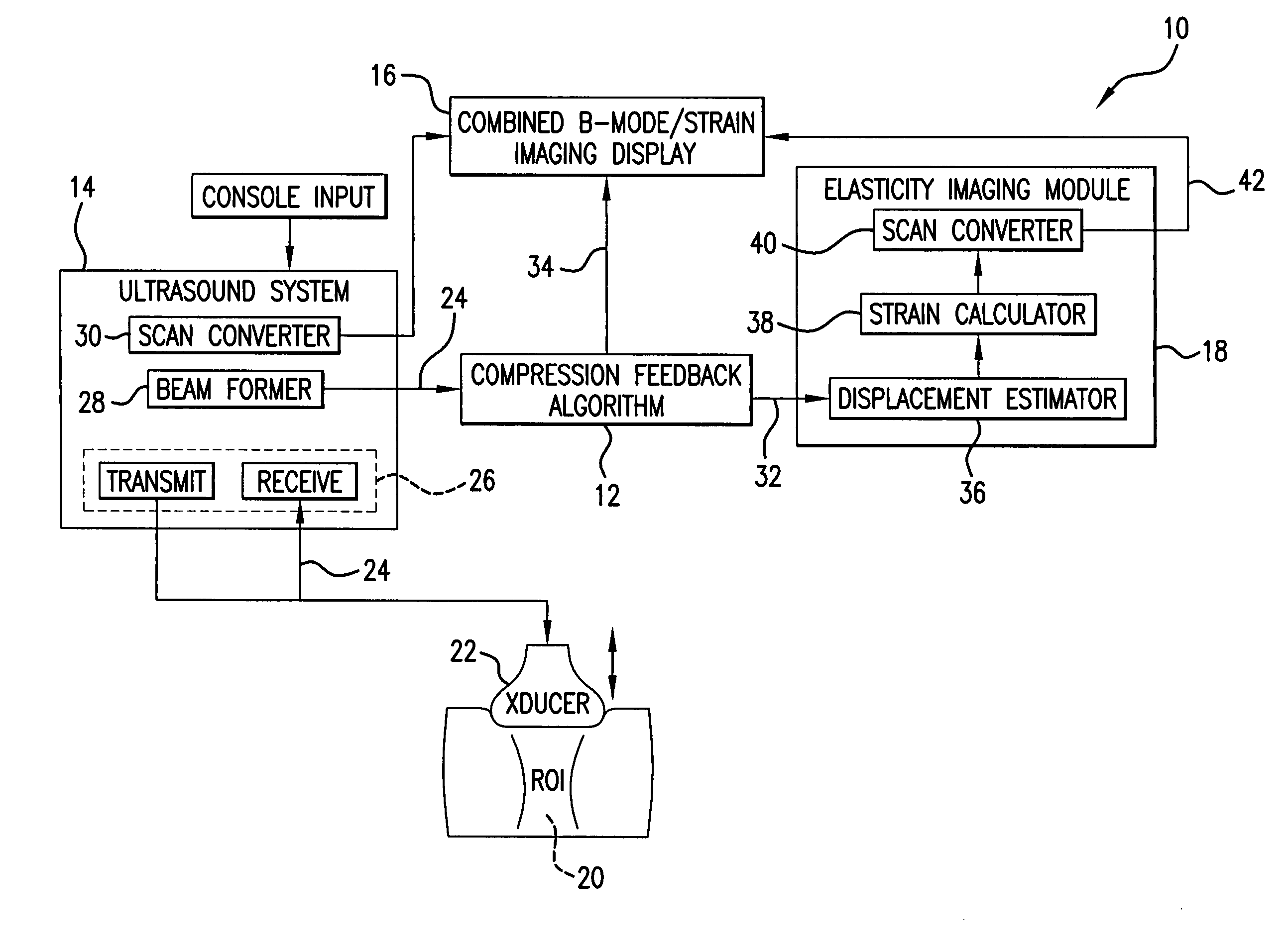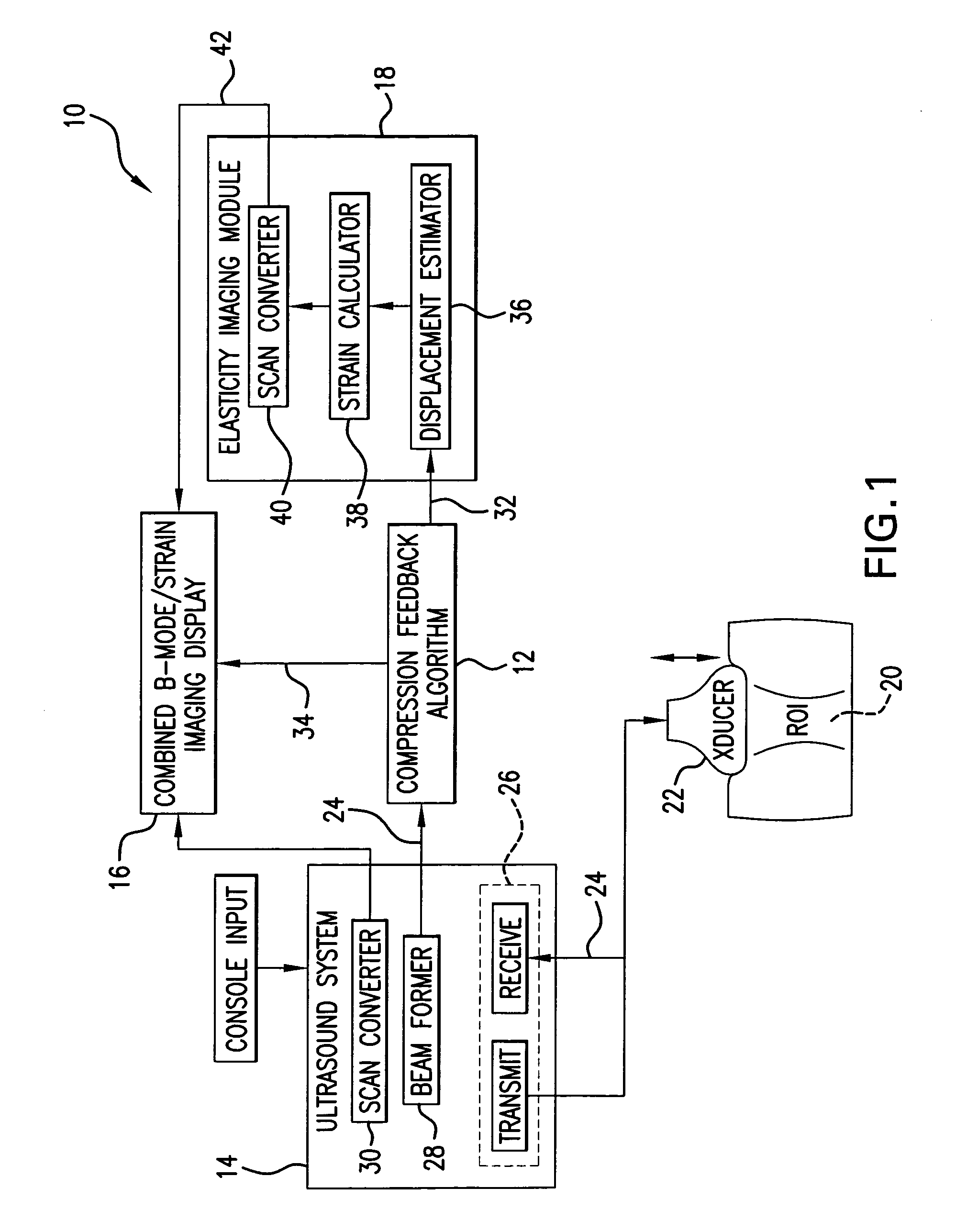Method and apparatus for elasticity imaging
a technology of elasticity imaging and method, applied in the field of computation efficient algorithm for tissue compression analysis, can solve the problems of affecting the accuracy of tissue compression analysis,
- Summary
- Abstract
- Description
- Claims
- Application Information
AI Technical Summary
Benefits of technology
Problems solved by technology
Method used
Image
Examples
Embodiment Construction
[0036] An elasticity imaging system, and method for using same, employs a tissue compression analysis algorithm for free-hand static elasticity imaging utilizing medical diagnostic ultrasound imaging equipment. The compression feedback algorithm's application offers tissue compression quality and provides quantity feedback to the operator. The compression feedback algorithm analyzes the pre- and post-compression frame pairs and provides an elasticity image quality prediction before an elasticity imaging module computes the elasticity image. The algorithm includes a criterion for the automatic selection of the most advantageous pre- and post-compression frame pairs for delivering elasticity images of optimal dynamic ranges and signal-to-noise ratios. The use of the algorithm in real time eases operator training and reduces significantly the amount of artifact in the elasticity images while also lowering the computational burden. In addition, operator training and confirmation of the ...
PUM
 Login to View More
Login to View More Abstract
Description
Claims
Application Information
 Login to View More
Login to View More - R&D
- Intellectual Property
- Life Sciences
- Materials
- Tech Scout
- Unparalleled Data Quality
- Higher Quality Content
- 60% Fewer Hallucinations
Browse by: Latest US Patents, China's latest patents, Technical Efficacy Thesaurus, Application Domain, Technology Topic, Popular Technical Reports.
© 2025 PatSnap. All rights reserved.Legal|Privacy policy|Modern Slavery Act Transparency Statement|Sitemap|About US| Contact US: help@patsnap.com



